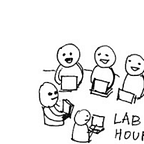Code Societies 2018, Days 10 & 11, with Shannon Mattern
written by ruth.wtf
Session 1
Shannon Mattern, a Professor of Media Studies at The New School, joined us for two sessions of Summer’s Code Societies. Her teaching focuses on archives and other information structures, with our sessions specifically considering the effect of classification systems on the way our society has been coded into existence.
Shannon probed our current relation with ontologies by starting the session with the question:
Think of a logic of organisation you have in your home, in material or virtual world- what (occasionally contradictory) organisational logics or ontologies underlie these practices?
How do we classify and organize the objects in our material/virtual world?
- chronological?
- by color?
- by frequency of use?
We looked to some already established systems of classification and how these can express the intent and background of their constructors. For example, one can read a lot about colonial ideologies from how their categorization is imposed on the design of museums. Another still prominent and sensitive system is the structure of the US census. When looking at a timeline of census’ we can visualise how classifications have changed for race and ethnicity.
As evident in these samples, systems of classification (and of standardisation) form a juncture of social organisation, moral order, and layers of technical integration. They form a “system of universal screws”. We also look to historical methods of compartmentalising for understanding the perceived world– in both religious and scientific approaches. Some interesting systems include the Great Chain of Being, a hierarchical structure of all matter and life which places God at the top and root vegetables at the bottom closer to the devil, Plato’s divided line, and Aristotle’s dividing of beings by blood form.
The Dewey Decimal System, a library classification system first developed in 1876, is one widely used throughout the West today. However, having such a broadly distributed system allows a monopoly for specific positions of what is important, allowing racist and sexist views to be reflected.
The digitizing of traditional archives allows for cementation of past biases and the creation of new digital archives codes in contemporary prejudices. This is particularly prominent in the field of machine learning where humanly preconfigured datasets are used to train a “machine learning device, a neural net, and the neural net classifies subsequent images probabilistically”.
Shannon shows us that the definitions of classification, taxonomy, and ontology are not always distinct, and often resemble each other and are interchangeable with each other. This confusion can be productive when we consider the entanglements among ontologies as they’re understood in:
- Information science/AI (a formal description of the concepts, properties and relations between those concept that are central to a domain — typically for the purpose of semantic interoperability)
- Philosophy (the study of the nature of being, existence, or reality, and the basic categories of being and their relations)
How might we imagine new ways of knowing — even new worlds — through new organisational structures? Can we develop a means of challenging dominant organisation structures?
We looked to different methods of dismantling these structures- first to Georges Perec, a novelist and filmmaker who used humour through wordplay, puns and attempts at classification.
Another artist working in this realm is Mimi Onuoha who draws attention to the unbalanced hierarchies in the construction of classification systems by creating a library of missing datasets- often spaces of oppression of minority groups that aren’t fitted into classes.
We mobilized this lecture by doing an exercise with sources from the Reanimation Library. The Reanimation Library exists as a collection of “relics of the rapidly receding 20th century”. Its assortment reflects outmoded knowledge through books such as training manuals for technologies we have moved well beyond and can be viewed as a time capsule of intellectual history. Our exercise was one of image classification: “Organise images into a taxonomy not driven by semantic but by aesthetic properties.”
To end this session, field kits for the collection of “lost and unwanted specimens” were distributed throughout the class as an assignment to explore what values and what ways of being, are implied in a collection of the lost, unwanted, and lonely.
Session 2
“The impossibility of penetrating the divine pattern of the universe cannot stop us from planning human patterns, even though we are conscious they are not definitive.”
We open with a quote from the preface to Foucault’s The Order of Things.
What are other ontologies that we can use to think?
- Feminist Ontologies
- Feminism and the Future of Library Discovery
- Indigenous Ontologies
- Geographic — Iconological
For the remainder of this session we divided into groups with our collected lost and found items to devise an ontology that would describe their relations in a connected ethos.
